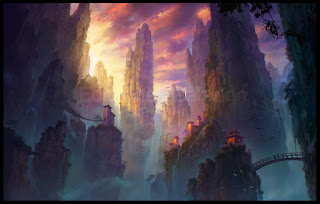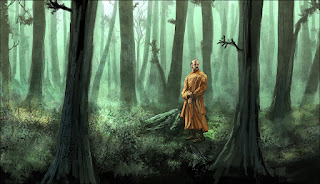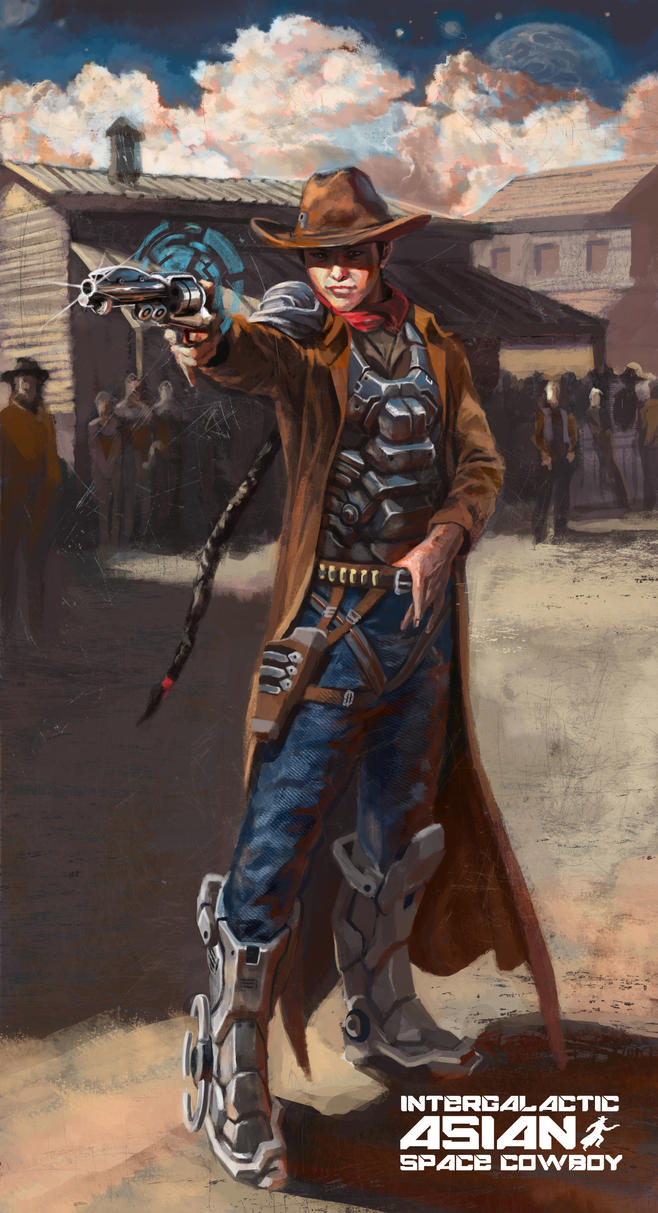Heroism as Power-Set
So far, we have psionic powers, martial arts and
cybernetics as power-sets. Each invests the character more deeply
into a particular aspect of the setting, and expresses what makes him
cool.
-
Psionic Powers invest the character more
deeply into Communion and Psi-Wars as a mystical setting. It lets
your character be cool in a “spooky” way.
-
Martial Arts invest the character more deeply
into a particular culture and Psi-Wars as a warrior setting. It
lets the character be cool in a “lethal” way.
-
Cybernetics invest a character more deeply
into technology and the robots of Psi-Wars. It lets your character
be cool in a profoundly physical way.
I've decided on a Heroic
power-set as a fourth option. It represents a more generic
power-set, someone who is cool for the sake of being cool.
A heroic character embraces the fact that he's an action character
as his prime element and turns that particular aspect up to 11. It
also has no specific focus. Whereas the other powersets require huge
catalogs of options for the player to navigate, the heroic power set
will not. The hero isn't required to worry about the specific nature
of his heroism. He's free to work those details out later.
This doesn't tie a
character into anything specifically,
but it seems very probable that such characters would have a great
deal of destiny. These characters matter.
Wherever they show up, the world shifts and changes. They're “the
chosen one.”
Attributes:
Choose
one of DX +1 [20], IQ +1 [20] or
both
HT +1 [10] and
Will +2 [10]
Advantages:
Destiny
(Varies) 3 [15]; Choose 15 points of Appearance (Varies), Combat
Reflexes [15], Danger Sense [15], Daredevil [15], Destiny +2 or +3
[5/level], Fearlessness or
Unfazeable
[2/level or
15], Hard to Kill [2/level], Rapier Wit [5], Serendipity [15], or
improve Luck to Extreme Luck [30] for 15 points.
Experience as Power-Set
The rest of the power-sets involve moving the
character in a new direction. But what about characters who want to
be more of what they already are? Should a spy take psionic powers,
she becomes able to read minds or see the future, while a martial
artist spy becomes a lethal ninja, and cyborg spy becomes a master of
technology, but what about a spy who wants to be more of a spy?
After the End also
has power-sets, though less dramatic than those of Psi-Wars (it’s a
lower-key game), and it also features an Experienced
power-set. It represents an additional investment into your
characters capabilities, and it’s specific
to each template,
which is very suitable to Psi-Wars. It would also address a concern
I have, namely that players who enjoy the more high-octane gameplay
typical of the super-hero-style antics of the prequels might want to
start at higher point totals (400, perhaps). Can non-Psi-Knight
characters keep up without resorting to psionic powers and martial
arts?
Dungeon
Fantasy doesn’t
use these sorts of power-sets. Instead, they offer power-ups,
smaller packages that characters can grab as they increase in
experience. This actually fits the rest of the power-sets pretty
well: A psionic character doesn’t buy psionic powers 50 points at a
time, nor do martial artists. Instead, they improve a few skills and
buy a few powers 5-10 points at a time. Power-ups work the same way.
So,
I propose mixing the two: Every template has associated power-ups,
and characters who choose Experience as their power-set get a
50-points worth of power-ups. I'd like to make the individual power-ups worth no more than 25 points, so players can buy them in place of something in their advantage set, if they wished.
To
make this work, I need to define power-ups for each individual
template, which is a
lot
of work, work that I’m willing to do, but we
should start one template at a time.
I’d
like to start with the Spy, as the Spy is the most non-combat focused
of the character templates thus far. If I can’t come up with ~100
points worth of power-ups for the Spy, then this idea won’t work.
Advantages:
Choose 50 points from your template Advantages, or from your template
Power-Ups.
Spy Power-Ups
Conspirator 25 points
Advantages: Spend
20 points on Forgettable Face [1], Honest Face [1], Illuminated [15],
Security Clearance [5 to
15], Serendipity
(Conspiratorial -20%) [12], Truth Seeker +1 to +4 [5/level], Zeroed
[10]
Skills: Expert
Skill (Conspiracy Theory) (H) IQ [4]; Spend one additional point on
Current Affairs (Headline News or Politics) (E) IQ [1], Propaganda
(A) IQ-1 [1], or Intelligence Analysis (H) IQ-2 [1] or Detect Lies
(H) Per-2 [1].
Illuminated allows
the character to roll IQ in place of Hidden Lore (Communion) to
recognize any Communion symbolism, and the character may roll IQ to
recognize someone’s Destiny, provided it’s involved in any
conspiracy. Finally, it grants a +3 to Pulling Rank rolls.
Master of Disguises 25 points
Advantages: Spend
between 0 and 20 points on Impersonator, raising it to a minimum of
+4 [20]. Spend remaining points on
Accent (Any) [1], Convincing
Nod [1], Cultural Familiarity (Any) [1] or
Cultural Adaptability [10],
Disposable Identity [1], Equipment Bond (Disguise Kit) [1], Gizmo 1
(Disguise Kit Only -80%, Cosmic: Retcon +50%, Requires Disguise Roll
-10%) [3], Passing Appearance (Androgynous or Passing Complexion)
[1], Voice [10]
Skills: Mimicry
(Speech) (H) IQ+2* [1]; Spend an additional 4 points improving
Acting, Disguise or Mimicry.
Note that Voice
adds +2 to Mimicry.
Cosmic: Retcon
means that the character can claim he was already
using said gizmo. For the Disguise gizmo, this means that the
character can claim to
have been diguised “the whole time” as some other character (that
the GM approves).
Ghost 25 points
Advantages: Spend
between 0 and 20 points on Craftiness,
raising it to a minimum of +4 [20]. Spend remaining points on
Skills (below) or on
Catfall [10], Flexibility
[5] or
Double-Jointed [15], Forgettable Face [1], Nightvision
+1 to +5 [1/level], Perfect Balance [15], Serendipity (Stealth
Opportunities Only -80%) [3], Silence +1 to +2 [5/level], Trained by
a Master (Evastion -50%) [15].
Skills: Improve
Stealth by 1 level for 4 points; Spend one point on Jumping (E) DX
[1], Climbing (A) DX-1 [1], Acrobatics or Escape (H) DX-2 [1].
Hacker 25 points
Advantages: Cyberneticist
4 [20]
Skills: Computer
Hacking (H) IQ+4 [4]; Spend one point on Computer Operation (E) IQ+4*
[1], Computer Programming (AI) (H) IQ+2* [1], Electronic Repairs
(Computer) (A) IQ+3* [1], or
one of the following perks: Beep Fluency [1], Cross-Trained
(Computers) [1], Equipment Bond (Computer) [1],











